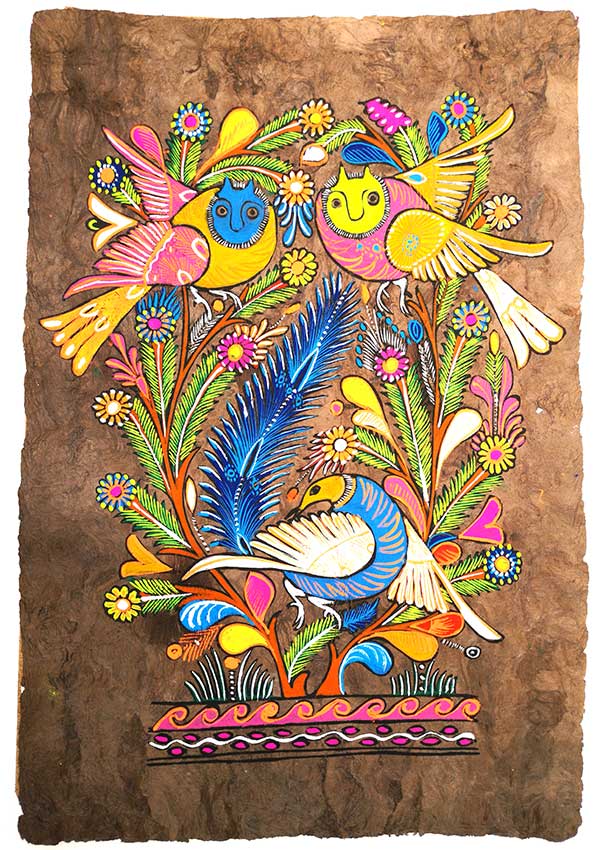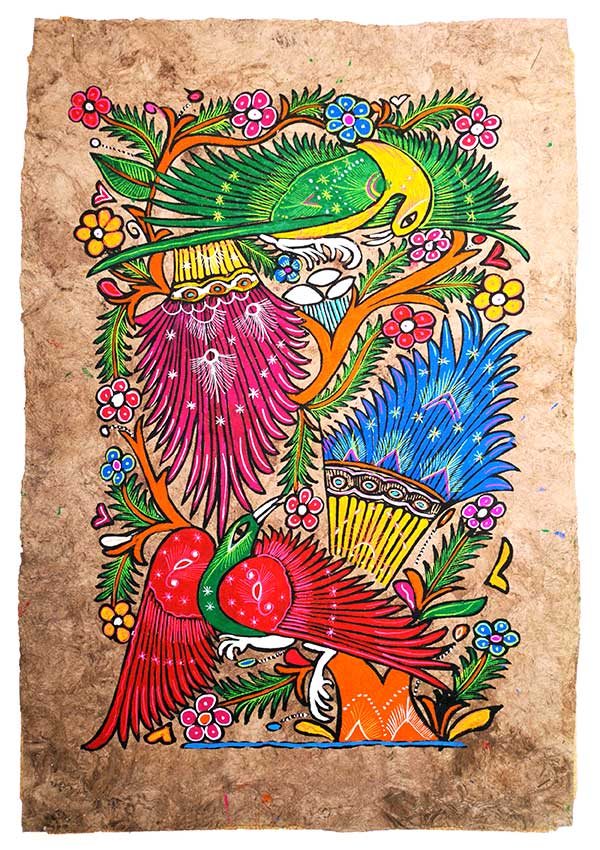Subtotal: $
Checkout-

The Strange Love of a Strange God
-

Is Congregational Singing Dead?
-

In Search of Eternity
-

Violas in Sing Sing
-

Hosting a Hootenanny
-

How to Lullaby
-

How to Raise Musical Children
-

How to Make Music Accessible
-

Chanting Psalms in the Dark
-

The Fiery Spirit of Song
-

The Harmony of the World
-

The Tapestry of Sound
-

Let Brotherly Love Remain
-

Take Up Your Cross Daily
-

The Bones of Memory
-

Poem: “Sunrise and Swag”
-

Poem: “Poland, 1985”
-

Church Bells of England
-

Editors’ Picks: Walk with Me
-

Editors’ Picks: Shakeshafte
-

Editors’ Picks: The Least of Us
-

Letters from Readers
-

Celtic Christianity on Iona
-

The Catherine Project
-

Mercedes Sosa
-

Covering the Cover: Why We Make Music
-

Music and Morals
-

The Death and Life of Christian Hardcore
-

Vallenato Comes Home
-

Does Political Music Change Anything?
-

Adventures in Americanaland
-

Music, Memory, and Alzheimer’s
-

Why We Make Music
-

Doing Bach Badly
-

Dolly Parton Is Magnificent
-

Go Tell It on the Mountain
-

Reading the Comments

In the Aztec Flower Paradise
For the ancient Nahua poets, the way to the holy runs through beauty.
By Joseph Julián González and Monique González
March 10, 2022
Available languages: Español
Next Article:
Explore Other Articles:
On a crisp fall morning sometime in the early 1990s, driving down the I-5 from Los Angeles to California’s Central Valley, I began to hear a piece of music in my mind. As a composer this wasn’t an unusual experience for me, and I enjoyed the interloping melody as a background track to a leisurely drive. As the miles flew past I began noticing details: a choir, a full symphony orchestra, and Aztec percussion. In fascination I began to wonder who had written it … Carlos Chávez? Silvestre Revueltas? Another Mexican composer? It sounded like a concert Mass; I heard the words of the Kyrie mixed with Aztec rhythms and instrumentation. Composer after composer passed through my mind before it dawned on me that what I was hearing was completely new; it was being “composed” as I heard it.
Any artist would kill for this type of inspiration. In excitement, I unconsciously pushed down the accelerator and was quickly rewarded with the strobing lights of the California Highway Patrol in my rearview mirror. After pulling to the side of the road, I scrambled for a piece of paper to notate the music I had been hearing in my mind. A few minutes later – with a speeding ticket in hand – I proceeded more slowly down the rest of the grade, mentally mapping out the concert Mass I would spend the next several years composing: Misa Azteca. Since then, the piece has been performed worldwide, from the Vatican to the Sydney Opera House. But all these years later, I’m still pondering the beauty and mystery I found in what became my source text: Aztec poetry.

Isabel Santos, Mythological Owls, acrylic paint on bark paper, 2020 All artwork by Isabel Santo. Used by permission.
From the beginning of Misa Azteca’s composition, I was inspired by Benjamin Britten’s 1962 War Requiem, which combines Wilfred Owen’s Great War poetry with the text of the Latin Mass for the Dead. I decided to mingle Aztec poetry with the Mass text in order to explore the religious sentiments present in both cultures, and to tell a story of the spiritual and religious transformation that occurred in Mexico, and for that matter most of the Americas. The Aztecs were one of over fifty Indigenous peoples – collectively known as the Nahua, speakers of Nahuatl – that lived in the Valley of Mexico at the time of the conquest. (I use “Aztec” and “Nahua” interchangeably to talk about the people who have lived in this area for well over a thousand years). An important aspect of Nahua culture was their unique compilation of orally transmitted song poems. The anthropologist John Bierhorst translated a large body of this classic Nahuatl literature in his 1985 English book Cantares Mexicanos: Songs of the Aztecs. Of the song poems collected by Franciscan friars, this collection contains just under a hundred. The texts, which include both pre- and post-conquest song poetry, were collected from the lips of Indigenous elders from 1558 to 1561, just four decades after the fall of Mexico at the hands of Hernán Cortés.
In the pages of the Cantares Mexicanos I sought texts that mirrored each movement of the Mass. It was not difficult to find Aztec equivalents to match most of the themes: the Kyrie (“Lord, Have Mercy”) is about asking for forgiveness of sin, while the Gloria (“Glory to God in the Highest”) is about worship. I easily incorporated poems on these themes into the composition. However, when I started to compose the Sanctus (“Holy, Holy, Holy is the Lord God Sabaoth”) and began looking for texts that captured the theme of holiness, another world opened up to me.
In Nahua philosophy and poetry, holiness is an actual place – a flower world paradise. We get a glimpse of this other realm through flowers, which serve as symbols of earthly beauty that gesture to divine reality. Flowers, in their beauty, emanate the holy, and singing – especially about flowers! – was the most important artistic expression of that holiness in the Nahua world view. But Nahua poetry is not easy to understand. The Franciscans were so baffled by these obscure and esoteric song poems that they considered them untranslatable. The Mexican anthropologist and historian Miguel León-Portilla addressed this aporia in Aztec Thought and Culture (1967), arguing that the people of pre-conquest Mesoamerica expressed their philosophical considerations in a highly specific metaphorical and poetic style. This melding, a genre called in xochitl in cuicatl, “flower and song,” along with the Nahuatl language itself, expresses Nahua philosophy. In fact, the word nahuatl means “clarity” and describes an entire culture dedicated to philosophical clarity and truth.

Isabel Santos, Aztec Eagles Nest, acrylic paint on bark paper, 2021
For millennia, Indigenous Nahua sages called the tlamatinime, or learned ones, composed song poems about the nature of truth and reality. They dictated them to the tlacuiloque, highly skilled artists who preserved the poems in pictorial writings that served as mnemonic devices helping tlamatinime to memorize and sing their poems to kings and in public rituals. As León-Portilla puts it:
The wise men did not believe that they could form rational images of what is beyond, but they were convinced that through metaphors, by means of poetry, truth was attainable. … Only through metaphor and poetry could they utter some truth about, and thus communicate with, the divine.
The tlamatinime believed there was a connection between beauty and the divine, and used the symbol of the flower to open the portal between them. Flowers and songs, therefore, can hardly be distinguished:
My flowers shall not cease
to live;
my songs shall never end;
I, a singer, intone them;
they become scattered, they are
spread about.
Through flower-song the wise men asked the hard questions about life and existence: How do we know what is real? Is life just a dream? What is the purpose of life? What is truth? Can you find it on earth? One flower poet writes:
Is there perchance any truth to
our words here?
All seems so like a dream, only do we rise from sleep,
Only on earth do our words remain.
Nahua philosophy holds that truth, like beauty, must be transcendent and eternal, and flowers became metaphorically representative of both – the divine plane where truth can be found is the flower world paradise. This notion originates with the mother culture of Mesoamerica, the Olmec, whose art notably features a recurring motif of four points surrounding a central element – the four cardinal directions intersecting a central axis that reaches vertically to heaven, otherwise known as the axis mundi. Its intersecting planes connect, imaginatively and in three dimensions, the worldly and the eternal. In Mesoamerica, the conjunction of the axis mundi often manifests itself as a four-petaled flower. Archaeologists, anthropologists, and linguists observe that this flower world, as a solar, spiritual, and religious theme, is prevalent not only throughout Mesoamerica but also across the American Southwest. The ever-present image of the four-petaled flower along with the song poems of the tlamatinime demonstrate a belief in the transcendental aspects of beauty.
The Nahua notion of the flower world paradise resonates strikingly with the Platonic idea of the forms: that there is some ideal of perfection that we have in our minds and hearts. For instance, we possess an image of a perfect flower in our minds and with that we can judge which of two roses is more beautiful. In this way, earthly beauty triggers a remembrance or sense of divine beauty. Pope emeritus Benedict XVI describes this “remembrance” of the divine as a process of transcendental participation, humanity’s propensity for moving towards transcendence, a “godlike constitution of our being” oriented away from ourselves. Beauty, like truth, is a metaphysical, transcendental reality; our experience of it can lift us from the material world to an encounter with being itself, or the ultimate source of beauty: God. Benedict agrees with both Plato and Saint Augustine that an encounter with beauty takes us to that transcendental realm. Beauty is, as Pope John Paul II described it in his encyclical, the veritatis splendor, the splendor of truth.

Isabel Santos, Quetzales and Crouching Peacock, acrylic paint on bark paper, 2020
The Mesoamerican idea of holiness sees flowers as just such a point of contact with the divine, and the tlamatinime were preoccupied with the search for truth through – via – beauty. The first song poem in Cantares Mexicanos, the Cuicapeuhcayotl, whose title could be translated as either the “Beginning of the Songs” or “The Origin of the Songs,” is preeminent among them. It summarizes man’s quest for truth, albeit in a uniquely Mesoamerican manner. Here is the first verse:
I ponder within my heart, where will I gather the holy, fragrant flowers?
Who will I ask?
I truly desire to ask the honorable golden hummingbird, the honorable jade hummingbird, I wish to ask the troupial butterfly.
Truly, they know where blossom the holy fragrant flowers:
I wander here through the forest of trogon birds,
I truly desire to wander through the forest of roseate swans and flowers
There they may be gathered, with dew glowing with sunlight,
There they blossom.
Perhaps I will see them there?
If they showed them to me, I will fill my tilma and with them I will greet the nobles, with them I will make the lords happy.
It cannot be a coincidence that the event which ultimately converted the Americas to Christianity involved roses and a tilma: the story of Saint Juan Diego and the apparition at Tepeyac Hill in 1531. In this Marian apparition, which many credit with the conversion of Mexico, not only did the Lady of Guadalupe appear to Juan Diego and speak in his Nahuatl tongue, she offered a sign of her blessing: roses, unlike any Juan Diego had ever seen, growing miraculously. Just as in the Nahua poem above, the Virgin Mary filled Juan Diego’s tilma – his cloak – with roses, leaving with them a miraculous imprint of her image. Though this apparition would transform Mexican culture, it preserved and embraced as true what the tlamatinime had long perceived in their poetry: holiness can be revealed through flowers, truth found through beauty.
The Nahua sought the ultimate source of truth through beauty, and in my own life, so have I. One day in 2008 I found myself walking up the steps of the church near my house. Within its walls, gorgeous strains of ancient motets and chants rang out, beckoning me to return to the church of my fathers. A nearly forgotten form of the Mass drew me back to faith, with musical beauty and a rhythm of prayer and longing that echoes back across the centuries. In the same way the Nahua were drawn to God through the magnificence of their ancient flower poetry, I was brought back to God through the splendor of the Tridentine Latin Mass, which has remained relatively unchanged for over centuries; ancient beauty gesturing beyond itself.
It is in the bosom of this tradition that I have begun to resolve the deeper questions that arose as I wrote my Misa Azteca, and sought the theme of holiness in Nahua poetry. For what is the Sanctus but a never-ending song praising the source of infinite beauty and truth? As the ancient poets sing:
Certainly, it is elsewhere in the hereafter where there is true joy …
Truly there is another life in the hereafter.
I wish to go there, I wish to sing amongst
the multitude of precious birds.
I wish to enjoy the holy flowers.
The fragrant flowers, the ones that please the heart
Only their intoxicating fragrance makes one happy, their fragrance intoxicates.
About the artist: Isabel Santos is an Indigenous Mexican from the state of Guerrero. Her mother tongue is Nahuatl, the native language of the Aztecs. The tradition of making bark paper and using it for documents and artwork has been kept alive since the Aztec era. Santos grew up in a household of artisans, and her mother and grandmother were also bark paper artists. Find more artwork by Santos and other Indigenous Mexican artists at etsy.com/shop/MexicaMexico.
Already a subscriber? Sign in
Try 3 months of unlimited access. Start your FREE TRIAL today. Cancel anytime.


















































Carolyn Eynon
Wonderful art, colorful nature and well written article. We, CAROLYN EYNON SINGERS are performing this work on APRIL 2 and 3 with the Promusica AZ choir and orchestra with soloists and dancers. Please attend cesingers.com for tix. We love the writing, energy of the texts, orchestral colors and the history of the Nahua poetry. We invite you to attend?
Theresa A. Yugar
It was such a gift to listen to your publication today. The academic scholaship and reflections you both have on Nahua thought and their emphasis on “flor y canto” are an important contribution in the fields of Mesoamerican and Mexican history, along with Guadalupe Studies. I can't wait to be one of the first people to purchase your pending book project.